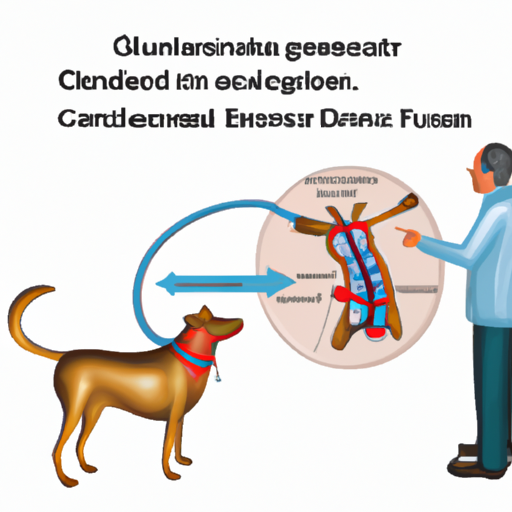“`markdown
What Causes Cushing’s Disease in Dogs
As a caregiver, understanding the health issues affecting our beloved pets is crucial. Today, we will delve into a common canine health problem – Cushing’s disease.
Understanding Cushing’s Disease
Cushing’s disease, also known as hyperadrenocorticism, is a condition where a dog’s body produces too much cortisol, a hormone that controls stress responses and moderates immune responses. This overproduction can lead to a host of health issues, including:
- Increased thirst and urination
- Increased appetite
- Skin problems
- Weight gain
Causes of Cushing’s Disease
Cushing’s disease in dogs is primarily caused by:
-
Pituitary gland tumors: This is the most common cause, accounting for about 85% of cases. Small, benign tumors in the pituitary gland located at the base of the brain cause overproduction of ACTH, a hormone that stimulates the adrenal glands to produce more cortisol.
-
Adrenal gland tumors: These tumors, which can be either benign or malignant, directly cause the adrenal glands to produce excessive cortisol.
-
Long-term use of corticosteroid medications: While necessary for treating some health conditions, these drugs can sometimes lead to Cushing’s disease.
Furthermore, Cushing’s disease tends to be more common in older dogs, particularly those aged six years or older.
Diagnosis of Cushing’s Disease
Diagnosing Cushing’s disease involves a series of tests, including:
- Blood and urine tests
- Ultrasound
- ACTH Stimulation test
- Low-Dose Dexamethasone Suppression (LDDS) test
A definitive diagnosis can be challenging due to the disease’s complex nature and overlap with other conditions’ symptoms.
Treatment for Cushing’s Disease
Once diagnosed, Cushing’s disease is typically managed rather than cured. The treatment plan often depends on the cause:
- For pituitary gland tumors, oral medications like trilostane or mitotane are commonly used.
- For adrenal gland tumors, surgery might be an option if the tumor hasn’t spread to other parts of the body.
Regular follow-up visits to the vet are essential to monitor the dog’s response to treatment and adjust the medication dosage as needed.
Preventing Cushing’s Disease
While you can’t entirely prevent Cushing’s disease, you can take steps to minimize your dog’s risk:
- Regular vet check-ups: Early detection can help manage the disease more effectively.
- Balanced diet and exercise: Obesity can increase the risk of Cushing’s disease, so maintaining a healthy weight is crucial.
FAQs About Cushing’s Disease in Dogs
Q: What are the symptoms I should look for?
A: Common symptoms include increased thirst and urination, increased appetite, skin problems, and weight gain.
Q: Can Cushing’s disease be cured?
A: While there’s no cure, Cushing’s disease can be managed with medication and regular vet check-ups.
Q: Does Cushing’s disease only affect older dogs?
A: Though more common in older dogs, Cushing’s disease can affect dogs of all ages.
Remember, as a caregiver, your vigilance plays a vital role in your pet’s health. By understanding the causes of Cushing’s disease, you can take proactive steps towards ensuring a healthier life for your furry friend.
“`



